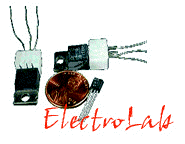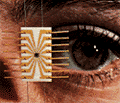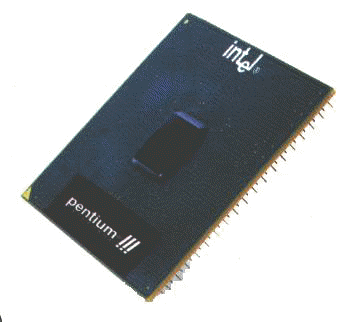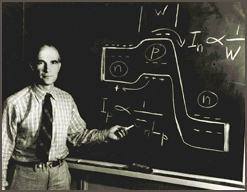






![]()
T
he transistor has been steadily developed over the years. In fact, so much so that there is not really that much room for improvement. The only foreseeable future development of the transistor is in its size. Since the 1960's, scientists have been saying that the transistor can not get much smaller than it already is. In fact, in 1961, it was stated that transistors could not get smaller than 10 millionths of a metre. Now, in modern times, there are transistors that are 100 times smaller than that. But even today, the same statement is being made, though in a few years, once again, we will be laughing at our close-mindedness. To put some truth into statements such as these, there will be a point where transistors cannot get smaller. This will be when the transistors get so small that they can only let one electron through at one time. As you all know, current relies on the flow of electrons, and when transistors get so small that not even one electron can flow through them, their purpose is defeated. However, as
with other technologies, transistor technology has and will be developed very rapidly. The
quest for a smaller and smaller transistor is carried out everyday, and not surprisingly,
in 1997, Motorola developed the thinnest transistor ever. The material used to make this
leads the way for future transistors to be extensively smaller and faster, and in doing
so, consumes less power.
However, as
with other technologies, transistor technology has and will be developed very rapidly. The
quest for a smaller and smaller transistor is carried out everyday, and not surprisingly,
in 1997, Motorola developed the thinnest transistor ever. The material used to make this
leads the way for future transistors to be extensively smaller and faster, and in doing
so, consumes less power.
Researchers at the University of Minnesota have gone one further and actually developed a seven nanometer transistor, which borders on the point where transistors can get no smaller. Their transistor, aptly named the Room Temperature Single Electron Metal Oxide Semiconductor Memory transistor, uses only one electron to represent one bit of information! While this may sound astounding, it has not been officially entered into the market as a working transistor, but has still received world-wide acclaim and interest from huge companies such as Texas Instruments and Intel Corporation.
To explain what is now termed as a single electron transistor, it works as follows:
First of all, only allowing one electron through at a time would mean that the current cannot fluctuate, because for current to fluctuate, it needs changing amounts of growing or decreasing electrons. Therefore, after the transistor gets to this size, it can only be used as a switch, to turn current “on” or “off”.
But the weirdness that surrounds quantum mechanics of the ultra-small, could mean that there might be a region in-between “on” and “off”, which would open up doors for entirely new kinds of computers.
Well, all that is in the future, and besides, even without technology, transistors can still be made smaller. By improving on the way they are built, current transistors will be at least twice as small by the year 2010. Already now, Intel’s latest chip holds about one billion transistors, which means, theoretically, that four times as many transistors on a chip are possible.
 What this would do for computers is it would
obviously make them smaller, but also smarter. The way that a computer works is all held
in instructions. These instructions are carried out by the CPU. By putting more
instructions into the same space, it can have different reactions for different
situations, far higher accuracy in carrying out commands, and most of all, the
“wait” associated with computers will be over. Chips will be exponentially
faster than they are now, even so much so that we could not possibly imagine.
What this would do for computers is it would
obviously make them smaller, but also smarter. The way that a computer works is all held
in instructions. These instructions are carried out by the CPU. By putting more
instructions into the same space, it can have different reactions for different
situations, far higher accuracy in carrying out commands, and most of all, the
“wait” associated with computers will be over. Chips will be exponentially
faster than they are now, even so much so that we could not possibly imagine.
 The 20th
century has brought much, with the invention of the transistor being one of the most
important. When we look forward to the 21st century, we can see nothing but innovation and
hope. Hope for a newer, faster, smaller generation. What we can do, is to make it worth it
for those inventors who shed so much blood, sweat and tears for the development of not
only mankind, but themselves. This gives inspiration to new minds, new hearts, even new
strengths. Who knows what the next century holds? Maybe YOU will be the next world-class
inventor...
The 20th
century has brought much, with the invention of the transistor being one of the most
important. When we look forward to the 21st century, we can see nothing but innovation and
hope. Hope for a newer, faster, smaller generation. What we can do, is to make it worth it
for those inventors who shed so much blood, sweat and tears for the development of not
only mankind, but themselves. This gives inspiration to new minds, new hearts, even new
strengths. Who knows what the next century holds? Maybe YOU will be the next world-class
inventor...